Happy New Year!
I sincerely hope 2024 brings you all closer to achieving the success, peace, and fulfillment we all deserve in life. I know I’m starting the year with lofty goals in mind for this publication overall, and I want to thank you for continuing this journey with me.
This Week’s Memorable Moments:

January 1, 1923: HOF’er Wee Willie Keeler Dies
On January 1, 1923, baseball legend Willie Keeler passed away at the age of 50 due to heart failure. Keeler, nicknamed “Wee Willie” for his small stature, was one of the best hitters of his era and a member of the National Baseball Hall of Fame.
He played for the New York Giants, Brooklyn Grooms, Baltimore Orioles, Brooklyn Superbas, and New York Highlanders from 1892 to 1910.
He was known for advising hitters: “Keep your eye clear, and hit 'em where they ain’t”.
Keeler was a master of the “Baltimore chop”, a technique of hitting the ball hard into the ground to bounce high over the infielders’ heads. He also used a heavy bat weighing up to 46 ounces, which he swung quickly and quickly.
He led the National League in batting average twice, in 1897 and 1898, and hit over .400 in 1897.
He also led the league in hits three times, and had a record-breaking streak of 44 consecutive games with a hit in 1897.
He finished his career with a .341 batting average, 2,932 hits, 495 stolen bases, and only 136 strikeouts in 9,591 at-bats.
Keeler was elected to the National Baseball Hall of Fame in 1939, on the fourth ballot. He was among the smallest players ever inducted, at 5-foot-4 and 140 pounds.
He died in his hometown of Brooklyn on New Year’s Day, 1923, after promising his fans and former teammates that he would live to see 1923.
He is buried in Calvary Cemetery in Queens, New York. He is remembered as one of the greatest contact hitters of all time and a pioneer of the modern game.

January 2, 2017: Busch Stadium Ices Over (On Purpose)
On January 2, 2017, Busch Stadium, the home of the St. Louis Cardinals baseball team, transformed into a hockey rink for the first time, as it hosted the NHL Winter Classic between the St. Louis Blues and the Chicago Blackhawks.
The Winter Classic is an annual outdoor game that features two rival teams in a historic or iconic venue. The 2017 edition was the ninth installment of the event, and the first one in St. Louis.
The game was a celebration of the Blues’ 50th anniversary season, as well as the city’s rich hockey history and culture. The Blues wore retro jerseys inspired by their original 1967 design, while the Blackhawks wore jerseys based on their 1957-58 season.
The game also featured a pre-game ceremony that honored former Blues and Blackhawks legends, such as Bobby Hull, Brett Hull, Bernie Federko, Al MacInnis, Chris Pronger, Tony Esposito, Denis Savard, and Bobby Orr. The game also included a flyover by four F-18 jets from the U.S. Navy.
The game itself was a thrilling affair, as the Blues defeated the Blackhawks 4-1 in front of a sellout crowd of 46,556 fans.
The game was a huge success for the Blues, the NHL, and the city of St. Louis, as it showcased the passion and pride of the hockey fans in the region.
The game also boosted the Blues’ confidence and momentum, as they went on to make the playoffs that season, and eventually won their first Stanley Cup in 2019.
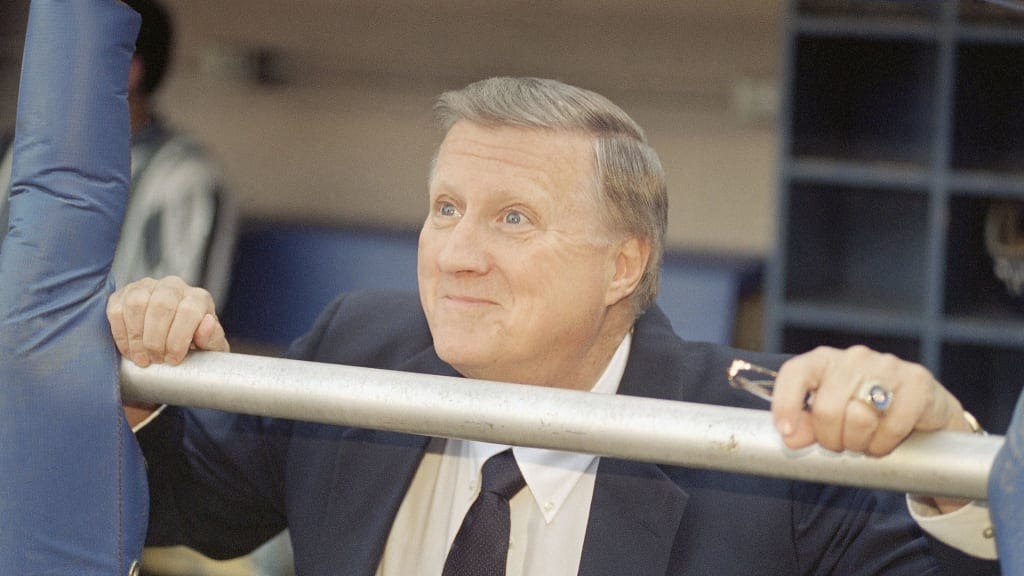
January 3, 1973: Steinbrenner Buys the Yankees
On January 3, 1973, a group of investors led by George Steinbrenner bought the New York Yankees from Columbia Broadcasting System (CBS) for $10 million.
Steinbrenner, a shipping magnate and former football coach, became the principal owner and the most influential figure in the team’s history. He was known as “The Boss” for his demanding and often controversial style of management, which involved frequent hiring and firing of managers, players, and executives, as well as meddling in the team’s on-field affairs.
Steinbrenner transformed the Yankees from a struggling franchise into a powerhouse that won seven World Series and 11 American League pennants during his tenure. He also increased the team’s value and revenue by signing star players, renovating the old Yankee Stadium, moving to a new one in 2009, and launching the YES Network, a regional sports channel dedicated to the Yankees.
He was also involved in several scandals, such as making illegal contributions to President Nixon’s re-election campaign, which resulted in his suspension from baseball for two years, and paying a gambler to dig up dirt on one of his players, Dave Winfield, which led to another banishment for life, later reduced to three years.
Steinbrenner died in 2010 at the age of 80, leaving behind a legacy of success and controversy. He was inducted into the National Baseball Hall of Fame in 2020. His sons, Hal and Hank, inherited the team and continue to run it as co-chairmen.
The Yankees are currently the most valuable sports franchise in the world, worth an estimated $5.25 billion, according to Forbes.

January 4, 1957: The Dodgers Are First to Buy a Team Plane
On January 4, 1957, the Brooklyn Dodgers became the first MLB team to buy a plane for their travel needs. They purchased a 44-seat Convair 440, a twin-engine propeller aircraft, for $700,000 (equivalent to $6.9 million today).
The plane had the team’s name and logo on it, and was registered as N1R. The Dodgers used the plane to fly between cities during the regular season, instead of relying on trains or commercial flights.
The Dodgers already had a 20-seat DC-3, which they received from Bud Holman, a team director, who won it from Eastern Air Lines in a dice game. However, the DC-3 was mainly used for transporting executives from their spring training site in Florida to New York, and was not suitable for the whole team.
The Dodgers experimented with flying a minor league team, the St. Paul Saints, for a season in 1954, and found that it was feasible and beneficial to have their own plane.
The Convair 440 helped the Dodgers save time and money, and also gave them more comfort and privacy. The plane was equipped with a bar, a lounge, and a card table. The players enjoyed the convenience and flexibility of flying on their own schedule, and also avoided the hassle of dealing with fans and reporters at airports.
The plane also allowed the Dodgers to scout and sign players from distant locations, such as Latin America.
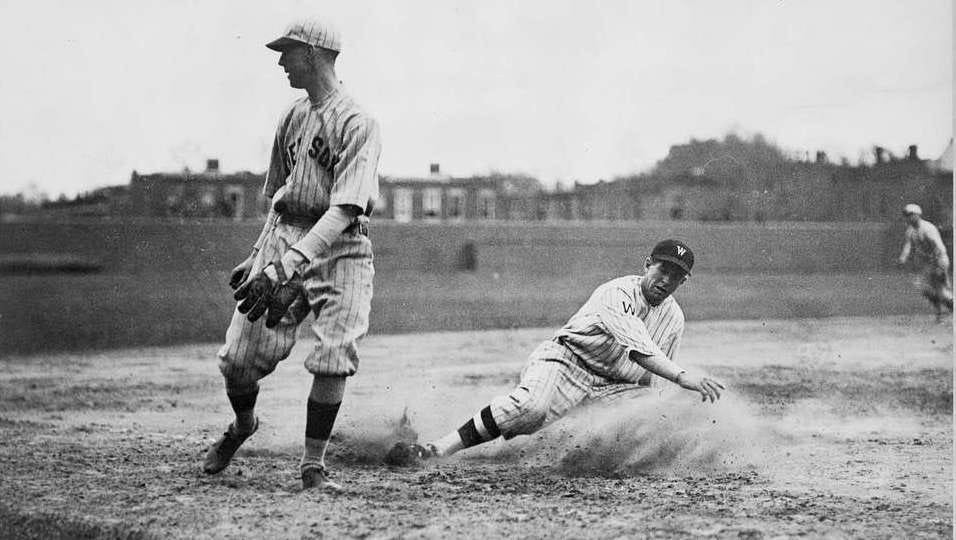
January 5, 1944: A Red Sox Player Gets Hit By a Car
On January 5, 1944, Joe Dugan, a former third baseman for the Boston Red Sox and other teams, was hit by a car while crossing a street in Boston. He suffered a slight concussion and a lacerated scalp but escaped serious injury. He was taken to a hospital and released the next day.
Dugan, who was 46 years old then, had retired from baseball in 1931 after playing for 14 seasons in the major leagues. He began his career with the Philadelphia Athletics in 1917 and later played for the Boston Red Sox, the New York Yankees, the Boston Braves, and the Detroit Tigers.
He was a member of the famed 1927 Yankees team that won the World Series and is considered one of the greatest teams ever. He was a solid defensive player and a decent hitter, with a career batting average of .280 and 1,516 hits.
Dugan was born in Mahanoy City, Pennsylvania, on May 10, 1897. He attended Villanova University and played baseball there. He also served in the Navy during World War I.
After playing, he was a coach and a scout for various teams, including the Red Sox. He died on July 7, 1982, at the age of 85.
January 6, 1958: Willie Mays Signs a Record-Breaking Contract
On January 6, 1958, Willie Mays, the star center fielder of the San Francisco Giants, signed a new contract that made him the highest-paid player in baseball history. The contract was for two years and $130,000, or $65,000 per season.
Mays had previously earned $50,000 per year, which was already among the top salaries in the game. Mays was coming off a stellar 1957 season, in which he led the National League in home runs (35), runs scored (112), and slugging percentage (.626), and finished second in the MVP voting.
Mays’s contract was a milestone in the evolution of baseball salaries, which had been relatively stagnant since the end of World War II. The average salary in 1957 was about $13,000, and only a handful of players earned more than $40,000.
Mays’s contract broke the previous record of $60,000, which was shared by Ted Williams of the Boston Red Sox and Stan Musial of the St. Louis Cardinals. Mays’s contract also reflected baseball's changing landscape, as the Giants had moved from New York to San Francisco after the 1957 season and were eager to attract fans and media attention in their new market.
Mays’s contract was not the last record he would set, as he continued to dominate the game for the next decade. He won his second MVP award in 1965 and became the first player to hit 50 home runs and steal 20 bases in a season. He also led the Giants to three pennants and one World Series title in 1958, 1962, and 1964.
He finished his career with 660 home runs, 3,283 hits, 12 Gold Gloves, and 24 All-Star selections. He was inducted into the Baseball Hall of Fame in 1979 and is widely regarded as one of the greatest players ever.

January 7, 1933: Commissioner Landis Takes a Great Depression-Driven Pay Cut
Here is a summary of the topic you requested:
On January 7, 1933, Kenesaw Mountain Landis, the first commissioner of baseball, announced that he was cutting his salary by 40 percent, from $65,000 to $39,000 per year. Landis’s action was a sign of the times during the Great Depression when most players and other baseball employees faced salary reductions or unemployment.
Landis said he was making the voluntary cut to show solidarity with the players and the public and to help the owners cope with the financial difficulties of the game.
Landis, a former federal judge, was hired as baseball’s commissioner in 1920 after the Black Sox scandal exposed the corruption and gambling that plagued the sport.
He was given absolute authority to act in the best interest of baseball, and he used it to ban the eight players involved in the scandal and other players who violated the rules or integrity of the game.
He also arbitrated disputes between owners, players, and leagues and enforced the color line that excluded Black players from the major leagues.
Landis was paid a generous salary of $65,000 per year, more than any player or manager at the time. He also received a $7,500 expense account, deducted from his judge’s salary of $12,500, which he continued to receive until 1922. Landis’s contract was renewed several times, and he remained the commissioner until his death in 1944.
Landis’s salary cut in 1933 was not the only one in baseball history. In 1973, Bowie Kuhn, the fifth baseball commissioner, reduced his salary by 10 percent, from $150,000 to $135,000, as part of a league-wide austerity program.
In 1994, Bud Selig, the ninth baseball commissioner, cut his salary by 15 percent, from $2.5 million to $2.125 million, during the players’ strike that canceled the World Series.
Before You Go…
Please take a moment and check out my new podcast, Top of the First. It’s a daily affirmation show sharing insights from baseball history to help you get focused and inspired for the day.'
Also, if you haven’t already, please help me turn this into a full-time gig by subscribing to this Substack for just $5 a month. For the cost of a drink at Starbucks, you can hel me keep growing and improving this show.
Remember - I rely on your support to keep growing this community. Thanks in advance for considering!








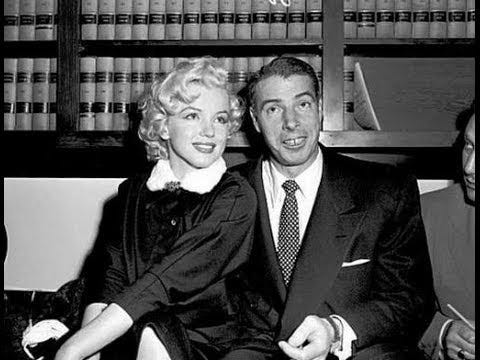
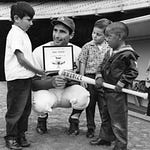

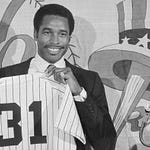


Share this post